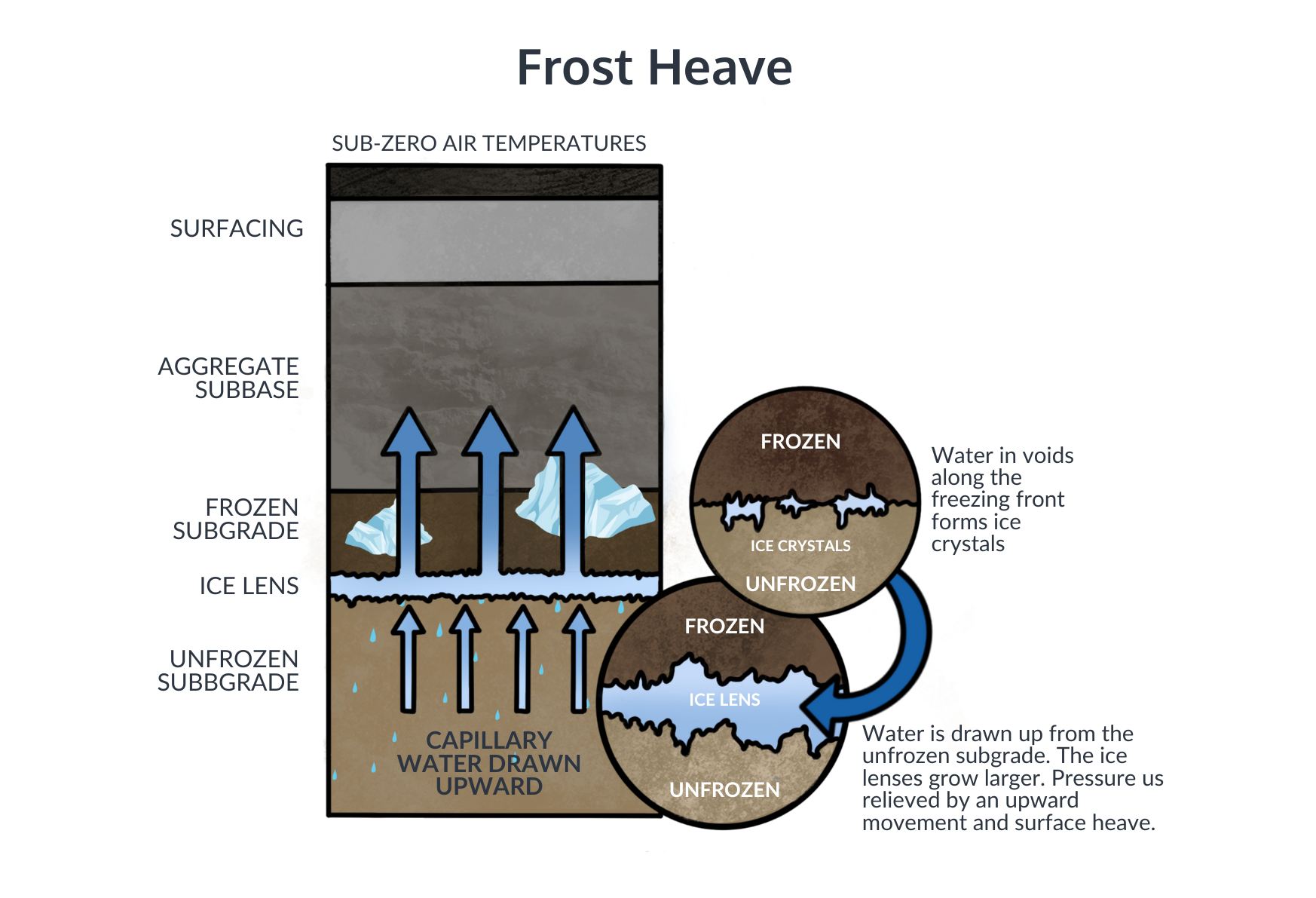Understanding Half Load Restrictions in Winter: Protecting Roads from Seasonal Damage
Winter brings unique challenges to construction and transportation, and one key regulation that comes into effect in many regions is half load restrictions. These seasonal weight limits are put in place to protect roads from damage caused by heavy vehicles traveling over weakened pavement and thawing subgrades. For industries that rely on transporting materials and equipment—such as construction, logistics, and geotechnical engineering—understanding these restrictions is essential to maintaining efficiency and preventing costly road damage.
What Are Half Loads and What Are They Used For?
Half loads refer to temporary weight restrictions placed on roads to limit the amount of weight a vehicle can carry. These restrictions typically reduce the maximum allowable weight by up to 50% of the usual legal limit. They are implemented primarily in late winter and early spring when roads are most vulnerable due to the freeze-thaw cycling.
Half load restrictions are commonly used to:
Prevent excessive road damage caused by heavy loads traveling over weakened surfaces.
Extend the lifespan of road infrastructure by reducing stress on asphalt and underlying soil layers.
Ensure safer driving conditions by minimizing potholes, rutting, and other roadway deterioration.
These restrictions are critical in regions with harsh winters, where fluctuating temperatures can significantly weaken roadways, making them more susceptible to damage from heavy vehicles.
Why Are Half Load Restrictions Needed?
During the winter, the ground freezes solid, making roadways more stable and capable of supporting heavy loads. However, as temperatures rise in late winter and early spring, the frozen ground begins to thaw from the surface downward. This creates a layer of water-saturated soil trapped between the thawed pavement and the still-frozen lower layers. Since waterlogged soil has significantly reduced strength due to a reduction in their effective stress in the submerged state, it cannot properly support heavy loads, leading to premature road deterioration, rutting, and potholes.
To mitigate this, many municipalities and provinces impose temporary load restrictions, reducing the allowable weight on roads by up to 50%. These restrictions typically last until the subgrade has fully thawed and dried out, allowing roads to regain their strength.
How Half Loads Affect Construction and Engineering Projects
For geotechnical engineers, half load restrictions directly impact material transportation, equipment mobilization, and project scheduling. Key considerations include:
Site Access Challenges: Heavy machinery and material deliveries may be delayed due to road restrictions, requiring careful planning and potential alternative routing.
Soil Testing & Ground Conditions: Understanding seasonal freeze-thaw cycles helps engineers predict when restrictions might be lifted and when roadways will be strong enough for heavier loads.
Foundation and Pavement Design: Geotechnical investigations can help design roadways and foundations that better withstand seasonal changes, reducing the need for stringent weight restrictions.
Best Practices for Managing Half Load Restrictions
To navigate seasonal load limits effectively, geotechnical professionals and construction managers can take several proactive steps:
Plan Ahead: Schedule heavy deliveries before restrictions take effect or adjust timelines to account for delays.
Use Alternative Routes: Identify roads with higher weight capacities or roads that may not be subject to seasonal load limits.
Optimize Load Weight: Distribute material loads across multiple trips to comply with regulations while maintaining progress on-site.
Consult Geotechnical Reports: Understanding the local soil and subgrade conditions can provide insights into when restrictions may be lifted and how roads will perform during the freeze-thaw cycle.
The PRI Engineering Approach
At PRI Engineering, we specialize in geotechnical solutions that help clients navigate half load restrictions efficiently. Our team conducts thorough soil investigations, monitors ground conditions, and provides expert recommendations to ensure project timelines stay on track.
We work closely with municipalities and project managers to assess load-bearing capacities, identify alternative transportation strategies, and implement engineering solutions that minimize seasonal disruptions. Whether it's designing more resilient road structures, optimizing material placement, or providing real-time site assessments, we take a proactive approach to overcoming winter construction challenges.
Additionally, our expertise in drainage design and frost-resistant materials allows us to create infrastructure that withstands freeze-thaw cycles, reducing reliance on seasonal weight restrictions in the future.
Conditions for Frost Heave:
Frost heave occurs when the following three conditions are met:
Frost-Susceptible Materials: The presence of materials that are prone to freezing, typically classified as frost-susceptible if 10% or more of the material passes through a 0.075 mm sieve, or 3% or more passes through a 0.02 mm sieve.
Ground Temperatures Below Freezing: The ground temperature must be below 0°C.
Presence of Water: Moisture must be available in the soil.
Effects of Frost Heave:
Frost heave causes uneven soil movement, lifting the pavement and creating bending stresses in the asphalt layer, which can lead to cracks. This bending effect is worsened by the added weight of snow plowed onto the road edges. Frost heave-induced pavement damage is a significant issue in cold regions.
Conclusion
Half load restrictions are a necessary measure to protect road infrastructure from seasonal damage caused by freeze-thaw cycles. While they can pose logistical challenges for construction and engineering projects, PRI Engineering provides the expertise needed to manage these restrictions effectively. By understanding and adapting to these seasonal limitations, industries can maintain project efficiency while ensuring the longevity of our road networks.
Have questions about how seasonal ground conditions affect your project? Contact our geotechnical team at PRI Engineering for expert guidance!




